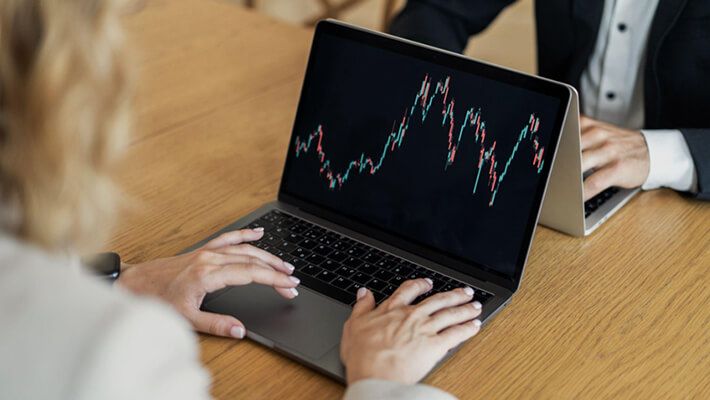Monday Nov 27 2023 08:06

11 min

What do you know about exchange-traded funds (ETFs)? Is this your first time hearing this type of asset? To give you a short explanation, ETFs allow you to trade a basket of securities such as stocks, bonds, or other assets.
Does ETFs sound interesting to you? If you're thinking of trading ETFs, learn how to become an ETF trader in four easy steps and embark on your journey towards financial success.
Let’s start by learning all the basic concepts and strategies:
The first step towards becoming an ETF trader is to acquire the relevant knowledge about trading this asset.
Without a strong foundation in ETFs, it becomes more challenging to make informed decisions, manage risks, and navigate the complexities of the market.
So get your basics right by learning as much as you can about ETFs to pave the way for long-term success as an ETF trader. Let’s start with learning what an ETF is.
An ETF works similarly to mutual funds in that it can track a specific index or commodity.
But unlike a mutual fund, ETFs are bought and sold on a stock exchange like traditional stocks. They can track anything from one commodity to various securities, and even investment strategies.
As an ETF trader, you gain partial ownership of a portfolio that professional financial managers assemble.
When an ETF’s price increases, you earn a potential profit based on the amount of your share. To get your money back, you can sell your shares immediately to other traders.
You can also trade Contracts for Difference (CFDs) on ETFs, where you speculate on the price movements of the underlying ETF without actually owning any physical shares.
ETFs and mutual funds are alike in some respects. But these financial instruments work a bit differently in these areas.
The net asset value (NAV) is the leading price factor influencing ETFs. It reflects the official value of the ETF. Other factors affecting the price of ETFs would be supply and demand and currency movements.
The Undertakings for Collective Investments in Transferable Securities (UCITS) is the regulatory body that oversees and regulates ETFs in Europe.
ETFs are subject to UCITS’ regulatory framework that aims to mitigate risks and safeguard traders’ interests.
The framework requires an ETF trader to follow some rules. These include maintaining liquidity, diversifying portfolios to manage risk, and holding assets with a custodian to prevent misuse of funds.

As multiple types of ETFs are available for trading, it’s vital to choose an ETF that presents the best opportunities for potential profit.
Here are some ways you can choose the best ETF that aligns with your preferences as an ETF trader.

As an ETF trader, your trading strategy should be cautious, structured, and thoughtful. Here are some of the popular trading strategies used by ETF traders.
A leveraged strategy may potentially multiply your gains. Leverage can double or triple the amount of any asset you have traded. But in the same way, it may also magnify your losses.
Marginal trading is one of the favourite strategies of day traders. However, be careful about choosing this strategy as it may incur a high level of risk.
This is a trading strategy that spreads your funds across different types of ETFs. It is a good strategy to try if you are a newbie ETF trader.
This involves choosing any ratio you want to split your capital, but one popular choice is 60/40. This means allocating 60% of your money in ETFs for company stocks and 40% in ETFs for bonds.
It is wise to trade on online ETFs that do not fluctuate too much in value. This type of strategy is likely to give decent returns.
Low-volatility trading is a good choice if you prefer not to take too many risks with your portfolio.
This ETF trading strategy is where you try to make short or medium-term gains in a few days to weeks. It’s different from day trading, which happens within a single day.
As an ETF trader, you can use sector rotation to take advantage of economic cycles. Depending on the economy’s health, you can move your trades from one industry to another.
This is considered to be an in-depth trading strategy, as you’ll have to identify which industry sectors are correlated and when to switch your trades at the proper time.
When you’re ready, take a position and apply what you have learned about ETFs.
An important first step would be choosing the platform on which you’re going to trade as an ETF trader. Many CFD platforms, like markets.com, offer ETFs.
On your chosen CFD platform, proceed to speculate on underlying asset price changes without owning them. As a prominent CFD platform, markets.com provides you with real-time movements of the ETFs.
Remember that taking this first step to learn CFD trading does not signify the end of your learning journey.
An ETF trader learns how ETF trading works by doing lots of research and practising to get better.
Even if you’re new to CFD trading, you can slowly develop the confidence to trade various CFD assets on markets.com. We offer a wide range of ETFs to choose from.
Become a member of markets.com and access a cutting-edge trading platform to stay ahead of market trends. With our platform, you can execute trades quickly and efficiently, giving you a competitive edge in the financial markets.
Don’t forget to check out our Traders’ Clinic so you can learn faster.
When considering "CFD ETFs" for trading and price predictions, remember that trading CFDs involves a significant degree of risk and could result in capital loss. Past performance is not indicative of any future results. This information is provided for informative purposes only and should not be construed to be investment advice.